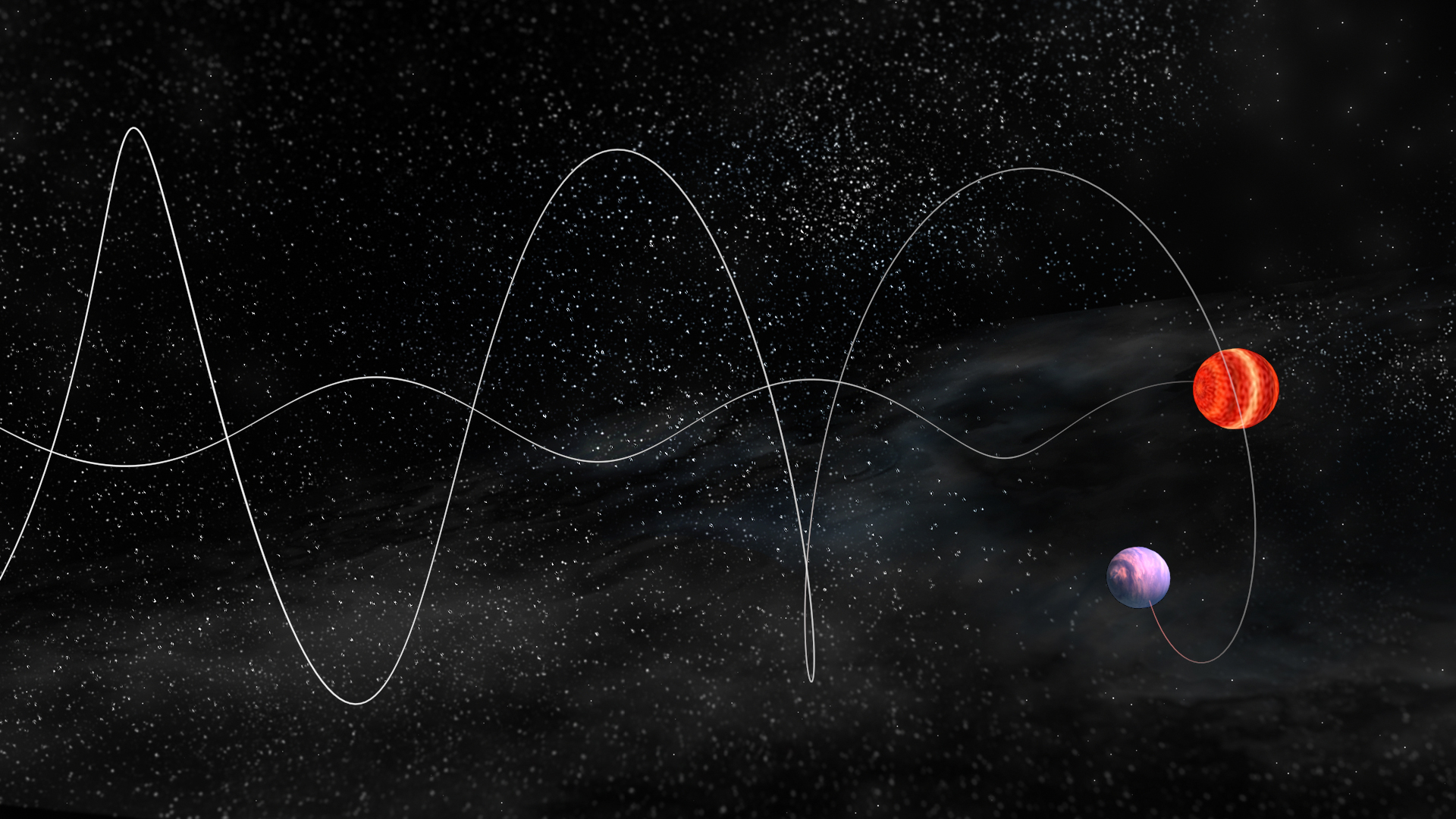It’s been a year of adaptation for everyone. The pandemic has upended many of the ways we function as an organization, from the easy communication gleaned from informal office chats to how our crews might implement a configuration change moving many of the Very Large Array’s 230-ton antennas (adding many employee safety protocols). There were unanticipated events that had to be addressed on the fly: ALMA Observatory had to shut down its 66-antenna array in March. And there was a much anticipated celebration—the Very Large Array turned 40 on October 10! The commemoration of this amazing milestone (the VLA is one of the most productive ground-based radio telescopes ever) had to be reconfigured by our STEAM Education team, from an in-person celebration into an all-day (eight-hour) virtual Zoom tour.
Yet, science still prevailed! The VLA and the Very Long Baseline Array kept observing in radio frequencies, while ALMA’s treasure trove of archival data remained available to anyone who could utilize it. (ALMA, by the way, is preparing a plan to restart operations in March of 2021).
The transition from office to home has had some positive outcomes: we found new avenues of broadcasting science and astronomy that reach more people—we are literally making Contact with the pubic! And our Education and Public Outreach staff continue to find different and better ways to communicate with our audience and to facilitate discussions about science and technology.
To recognize this wonky year, we created a recap of some of the scientific results that were popular with the public. To do this, we collaborated with Phil Plait (aka the Bad Astronomer), for the second year in a row, to develop a series of astronomy videos to highlight six exciting astronomical breakthroughs. Phil earned his PhD at the University of Virginia, right down the street from NRAO’s Charlottesville headquarters, and has been writing about science and astronomy for over twenty years. EPO gave him a challenge: to write super-condensed versions of six science results. He happily took the challenge on!
Every day through January 1, a video will be released on our social media platforms with additional commentary and fun facts. Check out our astronomy highlights of 2020 and let us know what you think. Enjoy!
Measuring the Wind Speed of a Brown Dwarf a Quadrillion Miles Away
Astronomers have used the National Science Foundation’s Karl G. Jansky Very Large Array (VLA) and NASA’s Spitzer Space Telescope to make the first measurement of wind speed on a brown dwarf — an object intermediate in mass between a planet and a star.
Writing and narration provided by Phil Plait.
Discover more about the wind speed of brown dwarfs from the original press release: https://public.nrao.edu/news/brown-dwarf-wind-speed/
Nomadic Black Holes Wander the Galaxy
Astronomers have discovered 13 supermassive black holes in dwarf galaxies less than a billion light-years from Earth, providing clues about the mechanisms that formed massive black holes in the early history of the Universe
These dwarf galaxies, more than 100 times less massive than our own Milky Way, are among the smallest galaxies known to host massive black holes. The scientists expect that the black holes in these smaller galaxies average about 400,000 times the mass of our Sun.
Writing and narration provided by Phil Plait.
Discover more about wandering black holes from the original press release:
https://public.nrao.edu/news/wandering-black-holes-dwarf-galaxies/
A Triple Star System with Misaligned Protoplanetary Disks!
It was once thought that planets couldn’t form around binary star systems. Now, astronomers, using ALMA Observatory, have found evidence of planet formation in a triple star system.
Writing and narration provided by Phil Plait.
Discover more about the science from our 2020 press release: https://public.nrao.edu/news/alma-discovers-misaligned-rings-in-planet-forming-disk-around-
triple-stars/
Saturn-Sized Exoplanet Discovered by the Gravitational “Wobble” in the Small, Cool Star It Orbits
Using the supersharp radio “vision” of the National Science Foundation’s continent-wide Very Long Baseline Array (VLBA), astronomers have discovered a Saturn-sized planet closely orbiting a small, cool star 35 light-years from Earth. This is the first discovery of an extrasolar planet with a radio telescope using a technique that requires extremely precise measurements of a star’s position in the sky, and only the second planet discovery for that technique and for radio telescopes.
Writing and narration provided by Phil Plait.
Discover more about the science from our 2020 press release: https://public.nrao.edu/news/vlba-finds-planet/
ALMA Shows Volcanic Impact on the Atmosphere of Jupiter’s moon Io
Io is the most volcanically active moon in our solar system. It hosts more than 400 active volcanoes, spewing out sulfur gases that give Io its yellow-white-orange-red colors when the gases freeze out on its surface.
New radio images from the U.S. National Science Foundation-funded Atacama Large Millimeter/submillimeter Array, ALMA, show for the first time the direct effect of volcanic activity on the atmosphere of Jupiter’s moon Io.
Writing and narration provided by Phil Plait.
Discover more about the science from our 2020 press release: https://public.nrao.edu/news/alma-shows-volcanic-impact-on-ios-atmosphere/
Supergiant Atmosphere of Antares Revealed by Radio Telescopes
Astronomers have created the most detailed map yet of the atmosphere of the red supergiant star Antares. The unprecedented sensitivity and resolution of both the Atacama Large Millimeter/submillimeter Array (ALMA) and Very Large Array (VLA) revealed the size and temperature of Antares’ atmosphere from just above the star’s surface, throughout its chromosphere, and all the way out to the wind region.
Writing and narration provided by Phil Plait.
Discover more about the science from our 2020 press release: https://public.nrao.edu/news/supergiant-atmosphere-of-antares-revealed-by-radio-telescopes/






